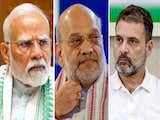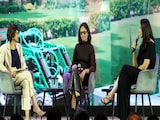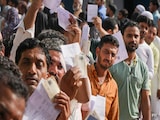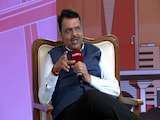- Protests in Los Angeles escalated over immigration raids, leading to chaos and arrests.
- Over 120 people were arrested as tensions resulted in violence, including property damage.
- President Trump deployed 2,000 National Guard troops, bypassing California Governor Newsom's objections.
What started as simmering outrage over federal immigration raids turned into a full-blown standoff in Los Angeles on Sunday. On its third day, the protests spiralled into chaos, self-driving cars were set on fire, a major freeway was shut down, and over 120 people were arrested.
Police responded with tear gas and rubber bullets as tensions ran high. Then came the flashpoint: US President Donald Trump deployed 2,000 National Guard troops to the city despite the objections of California Governor Gavin Newsom.
What Is The US National Guard?
The US National Guard is a part-time military force that serves both state and federal governments. Each state has its own Guard units, which can be activated by the governor for local emergencies, like wildfires, floods, or protests, or by the President for national missions, including overseas deployments or domestic unrest.
The Guard is made up of two branches: the Army National Guard and the Air National Guard, totalling over 430,000 personnel. It operates under two legal frameworks, Title 32, where the governor is in charge (often for disaster response), and Title 10, where the President takes command (for federal missions).
Why Are National Guard Troops In Los Angeles?
Trump deployed the National Guards in direct response to widespread protests following a series of controversial ICE raids across Los Angeles. Immigration enforcement officers targeted workplaces such as Home Depots, a doughnut shop, and a warehouse.
Trump justified the troop deployment as necessary to "address the lawlessness" in California. By federalising the National Guard under Title 10, he placed them under his command, bypassing Governor Newsom, who normally controls the state's Guard.
"We're not going to let this happen to our country. We're not going to let our country be torn apart like it was under Biden," Trump said Sunday.
What Threats Are They Responding To?
The National Guard is not directly engaging in law enforcement. Their said role is to protect ICE officers and guard federal facilities, including a downtown detention centre where some detained immigrants were taken.
Protesters reportedly hurled rocks and concrete at federal agents, damaged property, including setting self-driving cars on fire, and clashed with police, prompting officers to use tear gas, rubber bullets, and flash bangs to control the crowds. Authorities have warned of growing public safety threats, describing the protests as being driven by "violent, insurrectionist mobs" and even suggesting possible cartel involvement. To prevent further unrest, Guard troops are now stationed outside key federal buildings, especially ICE facilities, to protect them from damage and block protesters from breaching federal grounds.
"There's nothing these troops will be allowed to do that, for example, the ICE officers against whom these protests have been directed could not do themselves," wrote Georgetown law professor Steve Vladeck.
What Is The Legal Basis?
The Insurrection Act, an 18th-century law, allows US presidents to use military force during rebellion or unrest, but Trump hasn't invoked it.
Instead, he relied on another statute that allows the president to federalise National Guard troops in emergencies. This places them under federal command, though the law says such orders should go through the state's governor, a step Trump skipped.
"Purposely inflammatory and will only escalate tensions," Gavin Newsom said of the deployment.
Past Precedents
In 1957, US President Dwight Eisenhower sent federal troops to enforce school desegregation in Little Rock, Arkansas.
In 1992, President George W Bush invoked the Insurrection Act during the Los Angeles riots following the Rodney King verdict.
More recently, in 2020, Trump, in his first term, requested National Guard units from various states to respond to protests in Washington, DC, after the killing of George Floyd.
What sets the current situation in Los Angeles apart is the deployment of troops over the objection of the state's governor, a legally murky and highly unusual move.















